Home’s Life Expectancy
Your home’s life expectancy and when to replace the things in your home.
Wouldn’t it be great if your home and all the stuff in it came with a timer so that you would have some clue as to when something was about to fail and needed replacement? Of course it would. But we know the reality isn’t so accommodating. The way it goes, something fails and catches us off guard leaving us to react in the moment. Well, fortunately enough, there is enough data out there to give us some insight to the general life expectancy of most home components and appliances.
The following rundown includes the most common items in or on our home and how often they need replacing. Now suffice it to say that this list provides the average life expectancies accounting for usage, exposure, and a myriad of other variables… in short, your mileage may vary.
Roof
The life expectancy of your roof really depends on where you live, along with building design, materials and how much work you put into maintaining it. According to the National Association of Home Builders, a tile, copper or slate roof can last more than 50 years. Wood shake roofs should last about 30 years, while you’ll get about 25 years out of fiber cement. Asphalt shingles will give you about 20 years of reliable service if you take care of them properly. If you are among the lucky few that have a thatched roof, you can get up to 60 years of service… but again only if it is properly maintained.
Deck
Like your roof, your deck’s life expectancy depends greatly on climate and maintenance. The International Association of Certified Home Inspectors estimates decks made from wood planks lasts about 15 years, while structural wood gives you 10 to 30 years. Composite decking will last anywhere from 8 to 25 years.
Exterior Materials
Siding
Many homeowners will never have to replace their home’s exterior materials such as brick, stone, vinyl and fiber cement (Hardie)—all should outlast you. If you happen to have composite fiberboard siding (known by the brand name Masonite), unfortunately, will likely need to be replaced sooner than later. This type of siding was subject to numerous class action lawsuits due to its poor performance and high failure rate. Most those suits have expired, so if you have fiberboard siding on your house you will want to take very good care of it. It is necessary to seal and paint fiberboard every 3 years. It may be more cost effective to just replace the siding with more robust materials. Other exterior items like aluminum gutters and your wood shutters should be good for about 20 years.
Foundations
You shouldn’t have to worry about your foundation but only if you have termite and waterproof foundations, expect those things to last around 10 to 12 years before you’ll have to reapply.
Kitchen Items Life Expectancy
Cabinets

Countertops
Stone countertops should last a lifetime while marble countertops typically last around 20 years. Composite countertops tend to fair a little better at 25 years average life expectancy. Laminate countertops have a shorter lifespan of 10 to 20 years because of the wear and tear they take on. Some best practices for stone is to keep them sealed so stains don’t set in (stone is porous, it will stain).
Dishwasher
Consumer Reports asked manufactures of 13 dishwasher brands to weigh in on the lifespan of the appliance, and 10 years is about the norm. All manufactures noted it’s important to follow the owner’s manual and regularly clean out your dishwasher to keep it running properly. Dishwashers have strainers that need to be cleaned otherwise you’ll be blessed with a stinky washer. The strainers should be cleaned every 2 weeks or so.
Garbage Disposal
Garbage disposals last around 12 years… unless you have folks in your home that believe everything goes into a disposal. (I have a story about an entire roast and a disposal… the roast won). One note about disposals, they also require maintenance. Check the web for simple tricks to keep it running in top condition. Disposals also lock up, this doesn’t necessarily mean they broke. They often come with a key that you insert into the unit to “unlock” it. This frees any garbage that may have gotten lodged within.
Refrigerator
You’ll get about 6 to 15 years out of your refrigerator, according to leading polls. The most common refrigerator repairs include ice maker failure, main control board failure and a clogged drain.
Stovetop and Oven
When it comes to your kitchen cooktop and oven, how long it lasts depends on the type and how often you use it. According to the International Association of Certified Home Inspectors (InterNACHI), you can expect to get 10 to 18 years out of your gas oven and 15 to 17 years out of your gas range. An electric range will last 13 to 15 years.
Laundry Room Replacements
Washing Machine
The average life of a washing machine is 8 to 12 years. Keeping a washing machine in good working order is extremely challenging, repairing them rarely offers a return on investment. A good rule to follow, consider a new machine if the repair exceeds $500. The most common repairs include gasket replacements, switch failures, and valve issues. On rare occasions the entire main control board of the washer fails.
Clothes Dryer
Ten years is the average life expectancy of a clothes dryer, which conveniently aligns with the motor warranties they come with. To help increase your dryer’s life, keep the dryer vent clean and consider air drying when possible. Speaking of dryer vents, make sure that you have the right type in place, see our blog about dryer vents (yeah, a whole blog dedicated to this, odd).
Plumbing Life Expectancy
Toilet
When it comes to your home’s toilet, it can be hard to say how long it will last. However, there are some things that can tell you when it needs to be replaced. If, for instance, you’re constantly rebuilding the fill-valve and flapper, it suffers recurring clogs, or has a crack in the porcelain, you may be due for a new toilet. The newer models come with various features like jetted flush, vacuum flush, etc. From my experience the less “flash” your commode comes with, the less likely something will break. Simple is better here.
Water Heater
A general rule for water heaters older than 10 years, consider replacement. Some signs that your water heater is about to die include rusty water, rumbling noises and leaks. Maintenance plays a large part in the life expectancy of a water heater too. Draining the unit every year helps to rid the tank of debris that accelerates aging. Newer tanks claim to not require this standard in water heater maintenance, but being a skeptic, I would drain it anyway. Another required maintenance item, and one often overlooked, is failing to monitor and replace the sacrificial anode rod. The sacrificial anode rod, as its name implies, sacrifices itself for the sake of the water heater tank. Corrosive elements in the water will attack the rod before the tank’s interior wall. Forgetting to replace the spent anode rod means the water is literally eating away at your tank.
Faucets and Sinks
Faucets really vary when it comes to their life expectancy. Some work properly for 15 years while most last around 50 years. After all, you get what you pay for. Typically with faucets, the valve stems and gaskets fail, which are relatively easy and inexpensive fixes. More times than not, aesthetics will force a faucet replacement rather than outright failure. Shower enclosures typically remain in good condition for 50 years but shower doors are considerably less at around 20 years. Whirlpool tubs have a lifespan of 20 to 50 years, another wide variation that is typical of usage.
Flooring
You can expect your wood flooring to last about 100 years. Doing the math on how old the home is versus when you moved in should give you an idea as to how long you have left with them. Regardless, floors still need upkeep. Vinyl flooring lasts about 50 years, while you’ll get about 10 years out of your carpet. When it comes to tile flooring, life expectancy depends on the type of tile, maintenance and the foot traffic its subjected to.
Whole Home Replacements
Doors
HVAC System
Your home’s heating, ventilation and air conditioning systems should last you 15 to 25 years with proper upkeep. Furnaces should average about 15 to 20 years. However, many homeowners choose to update their furnace after 10 to 15 years for a more efficient model, but the question you need to ask yourself is are you making the return on the investment.
Masonry
Brick fireplaces should last the life of a house and brick walls should extend past 100 years.
Wiring/Electrical
If installed within the last 40 years, most wiring should last a lifetime whereas electric components like, lighting controls typically last a little more than a decade.
GFCI Receptacles
GFCI receptacles, a required safety device, also needs replacing every 15 to 20 years. Some may fail as early as 5 years so its important to always test your GFCI receptacles. Make sure the “Test” and “Reset” buttons work. If there is any issue with either button, replace the unit. Depending on when the house was built, conducting an audit to confirm GFCI outlets are installed in all locations required by modern standards is highly beneficial.
Smoke and Carbon Monoxide Detector Alarms
Smoke and Carbon Monoxide Detector Alarms have a life expectancy as well. Resin used in the manufacturing of their covers discolors with age. If you have units in your house that look a bit dingy and have yellowed, then its time to replace them. Check out our blog post about the various types of Smoke and Carbon Monoxide Detector Alarms and the ones that best suit your needs. This link takes you to the modern standards for placement in your home. Add more for the best coverage in case of an emergency.
Paint
Interior and exterior paint will typically last around 15 years before you’ll need to apply new coats or repaint.
Windows
Aluminum windows have an average lifespan of 15 to 20 years while wooden ones run a little longer at 30 years.

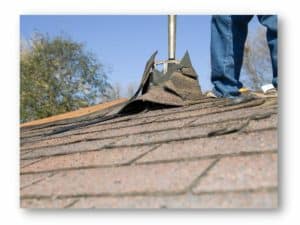
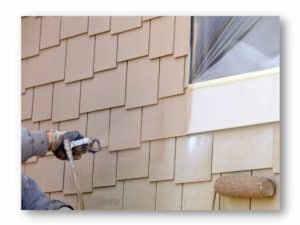
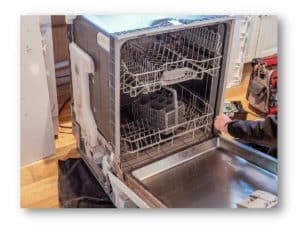
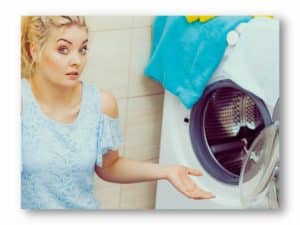

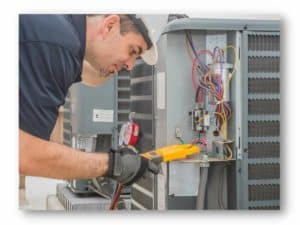
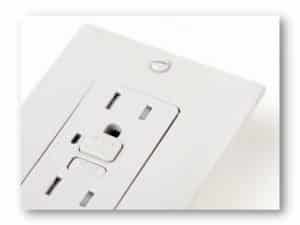
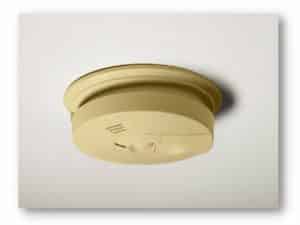




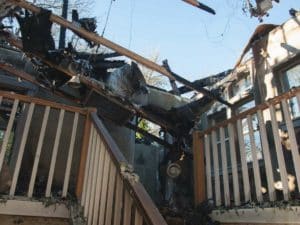
 rs, adding up closing costs, shopping for mortgages, and trying to get the best deals. Don’t stop now. Don’t let your real estate agent or anyone else talk you into skimping here. InterNACHI-certified inspectors perform the best inspections by far.
rs, adding up closing costs, shopping for mortgages, and trying to get the best deals. Don’t stop now. Don’t let your real estate agent or anyone else talk you into skimping here. InterNACHI-certified inspectors perform the best inspections by far.